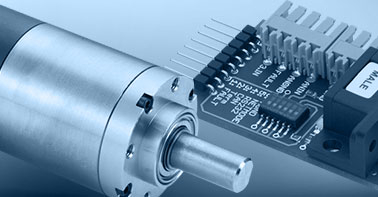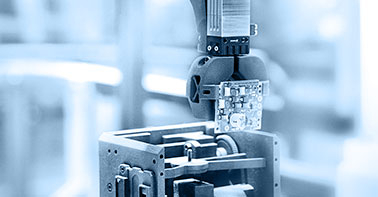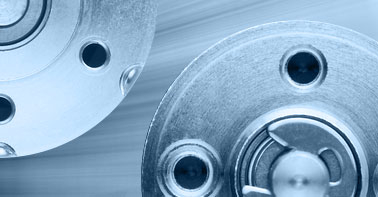- info@ems-ltd.com
- 0118 9817391
Home > PR > Let robots do the heavy lifting
Let robots do the heavy lifting
21/01/2025 - Why the construction industry needs robotics
21st January 2025
Filed under:
Ems, Stepper Motors, Robotics
.jpeg)
The construction industry faces many challenges, including recruitment gaps, sustainability concerns, and the need to improve worker safety. Amidst these concerns, could robotics provide a viable resolution?
While robotics has revolutionised the industrial and automotive sectors, it has yet to achieve widespread use in construction. However, it could help address many of the sector’s challenges.
Overcoming staffing shortages
In the Quarterly Recruitment Outlook, the British Chambers of Commerce reported that 82 per cent of construction firms struggle to recruit the right talent. Specialised skills like welding are in dwindling supply, and with many workers nearing retirement, fresh talent is insufficient to meet future demands.
Robots could alleviate worker shortfalls by automating repetitive tasks, such as welding. This would allow human workers to focus on more complex jobs without being overburdened.
Furthermore, a 2024 YouGov survey found that 68 per cent of UK adults wouldn’t consider a construction career. The survey also highlighted that 69 per cent had perceptions of the industry as ‘strenuous’, 52 per cent as ‘dirty’ and only 12 per cent as ‘forward thinking’. Here, embracing technology and utilising robotics and drones could transform the industry’s image, improve recruitment and retention, and help to address key concerns about physical strain and safety.
Improving worker safety
Safety is closely tied to retention, and robotics can significantly reduce risks. For instance, hazardous tasks like asbestos removal often require workers to wear restrictive protective gear, limiting mobility and productivity. Exposure rules also dictate how long employees can work with asbestos per day, meaning removal projects are often costly and time-consuming.
By using remotely operated robots, employee health risks and project timelines are significantly reduced and projects
Construction accounts for over half of all fatal falls across industries. Robots can be deployed and operate safely in high-risk areas, such as icy offshore platforms, helping to prevent potentially catastrophic falls.
Driving sustainability
It’s estimated that 32 per cent of our landfill waste comes from construction and demolition. Sorting waste manually is time-consuming and risky, exposing workers to sharp or contaminated materials. Here, automation can streamline waste sorting, reducing landfill contributions and improving recycling efforts for more sustainable operations.
Why the delay?
Despite these benefits, the adoption of robotics in construction remains limited. A 2024 report by BuiltWorlds highlighted that approximately 35 per cent of construction companies are utilising autonomous heavy equipment, with only six per cent using prefabrication robots. Unlike standardised manufacturing environments, construction sites are highly variable, posing challenges for robotic integration.
Construction managers must consider how robots navigate uneven terrain, fit into lifts and interact with workers and heavy machinery.
Advances in robot design, including more sophisticated sensing capabilities, are needed to address these challenges. To navigate sites safely, robots need advanced object recognition powered by onboard sensors. These may be visual sensors using regular cameras and image processing technology or Light Detection and Ranging (LiDAR) using near-infrared light.
DC motor technology
While enhancing robots’ ‘thinking’ capabilities is vital, their physical performance is equally important. Central to this is the choice of motor technology, which determines the robot’s ability to execute tasks efficiently and reliably.
Advancements in motor technology mean that DC motors are lighter and more powerful than ever. However, for optimum performance, motor selection must consider the end application. For example, a robot gripping and placing objects needs motors with sufficient torque to hold materials securely without damage. Conversely, stepper motors are ideal for intricate tasks like welding.
Stepper motors advance in precise increments, offering exceptional positional accuracy crucial for detailed work. In contrast, brushless DC motors are better suited for tasks prioritising speed and power, such as lifting or transporting heavy materials and delivering torque across various speeds.
The construction sector must embrace technology to attract talent, improve safety and meet sustainability goals. Robotics powered by advanced DC motors can modernise the industry, enabling companies to build more efficiently without compromising quality.
To find out more about available motors, get in touch with a member of the team today.
- Categories / Tags
- 1024...SR
- AEMT
- AESL
- Acceleration
- Agriculture
- Agritech
- Autoclave
- BHS
- BHT
- BHx
- BLDC
- BP4
- BRC Series
- BX4
- BXT
- BeBionic
- Bearings
- Bespoke
- Brushed
- Brushed DC Motors
- Brushless
- Brushless DC Motors
- Brushless Dc Motors
- Brushless Motor
- Buhler
- Building Automation
- COVID
- CXR
- Catalogue
- Company Update
- Controller
- Coreless
- Coventry
- Custom
- Custom Design
- DC Motor
- DC Motor Supplier
- DMN
- Dc Motor
- Design
- Dimatech
- Drones
- EDS
- EMS
- EMS News
- EV
- Encoder
- Ewellix
- Exoskeleton
- Expo
- FAULHABER
- Factory
- Faulhaber
- Flat
- GPT
- Galil
- Gearhead
- IEF3
- IMC
- Industry 4.0. Blog
- Inspection
- KAG
- LL06
- LM
- LVC
- Laboratory Automation
- Linear
- Linear Actuator
- Logistics
- M50
- M80
- MC3
- Maintenance
- Manufacturing
- Mechatronics
- MedTech
- Medical
- Medical Devices
- Medical Imaging
- Medtech
- Merkel
- Motion Control
- Motor
- Neurosurgery
- New
- Nidec
- Nidec Servo
- Optical
- Pain Relief
- Piezo
- Piezomotor
- Pipeline
- Planetary
- Planetary Gearheads
- Point Of Care
- Precision
- Precistep
- Process
- Production
- Quickshaft
- Robot
- Robotics
- Robots
- SKF
- SR Series
- Samples
- Small DC Motor
- Software
- Space
- Sponsorship
- Stepper
- Stepper Motor
- Stepper Motors
- TMS
- Testing
- Trade Show
- 1016
- 1660
- 1935
- 2017
- 2018
- 2020
- 2021



